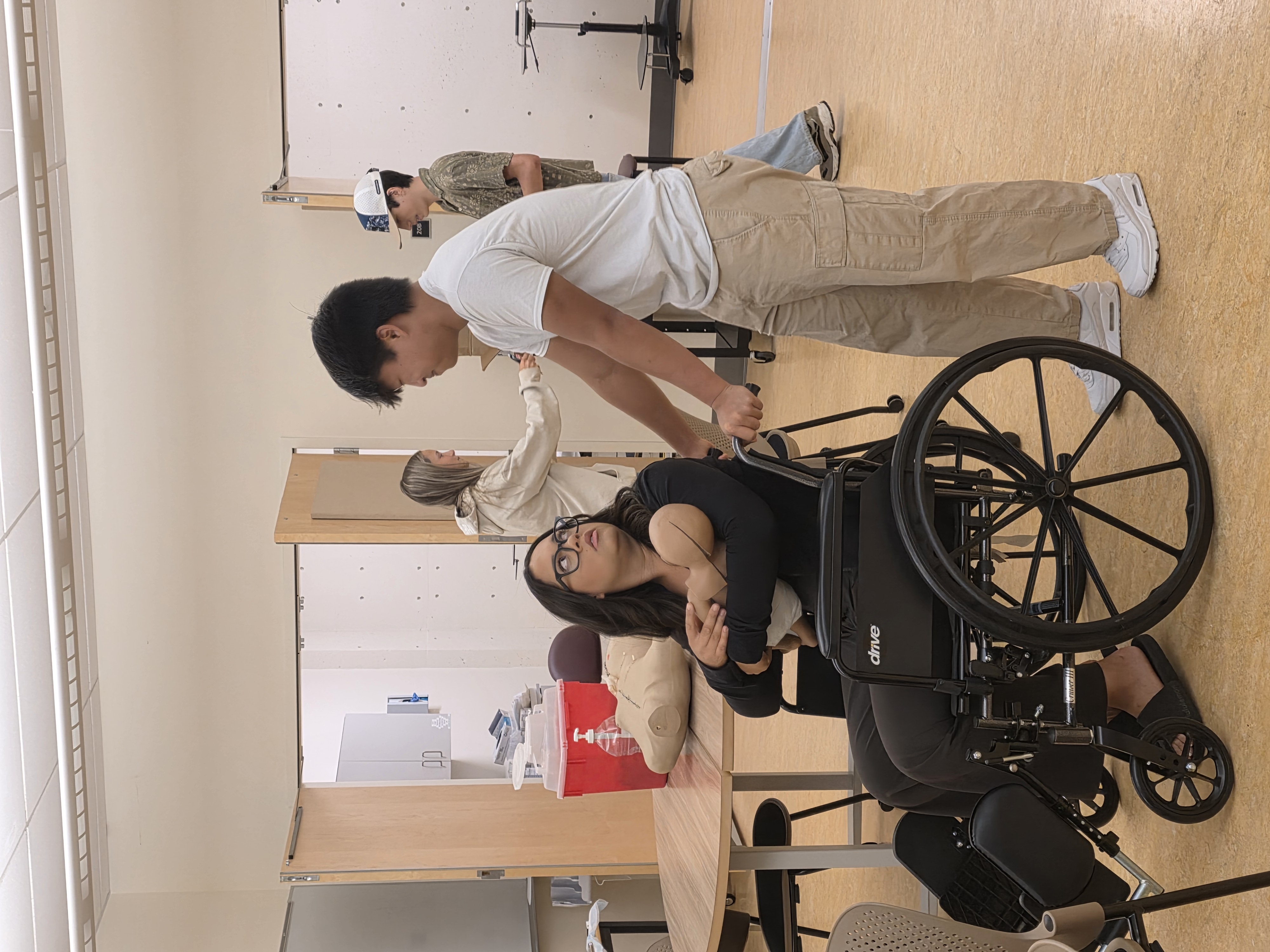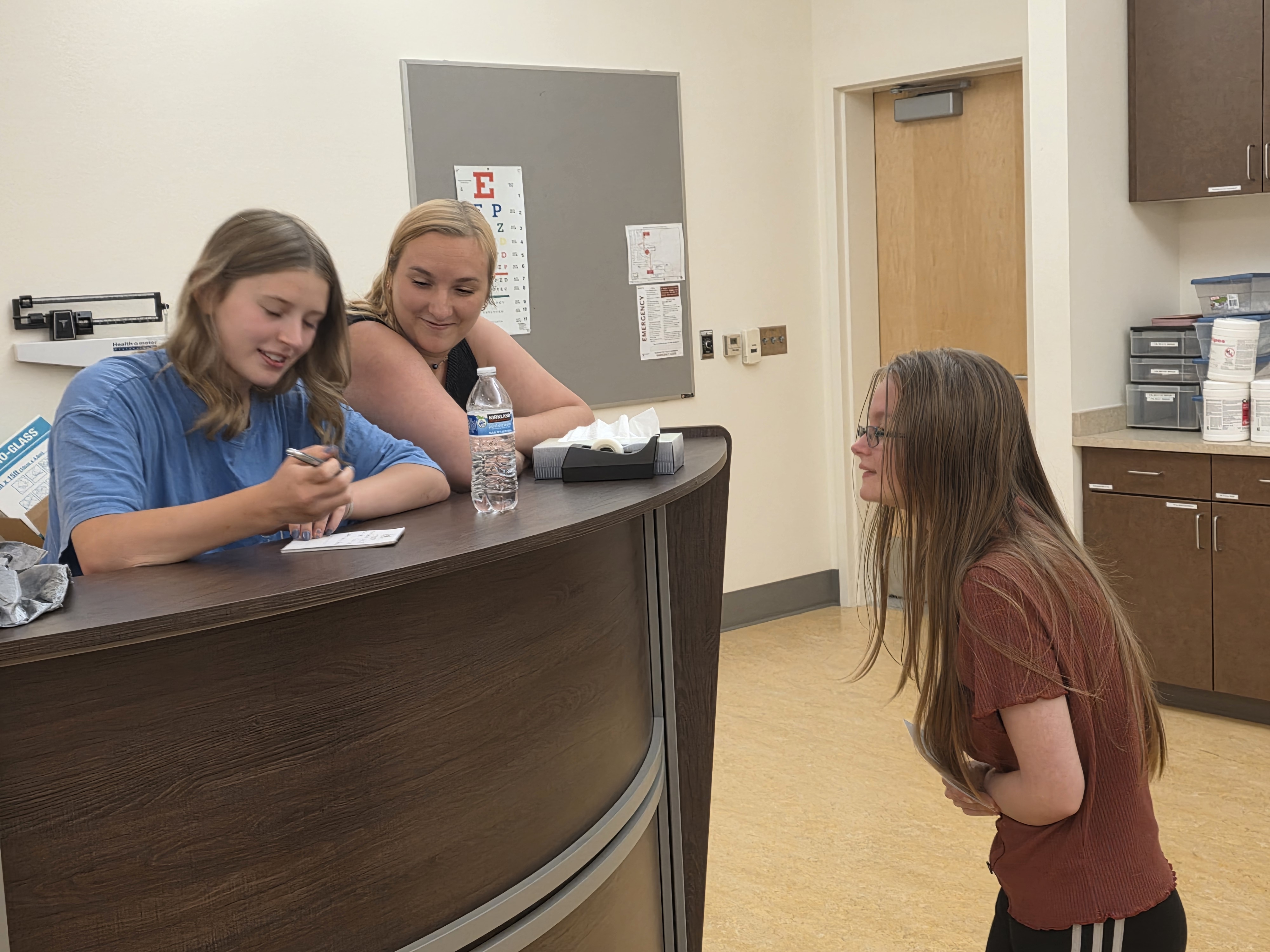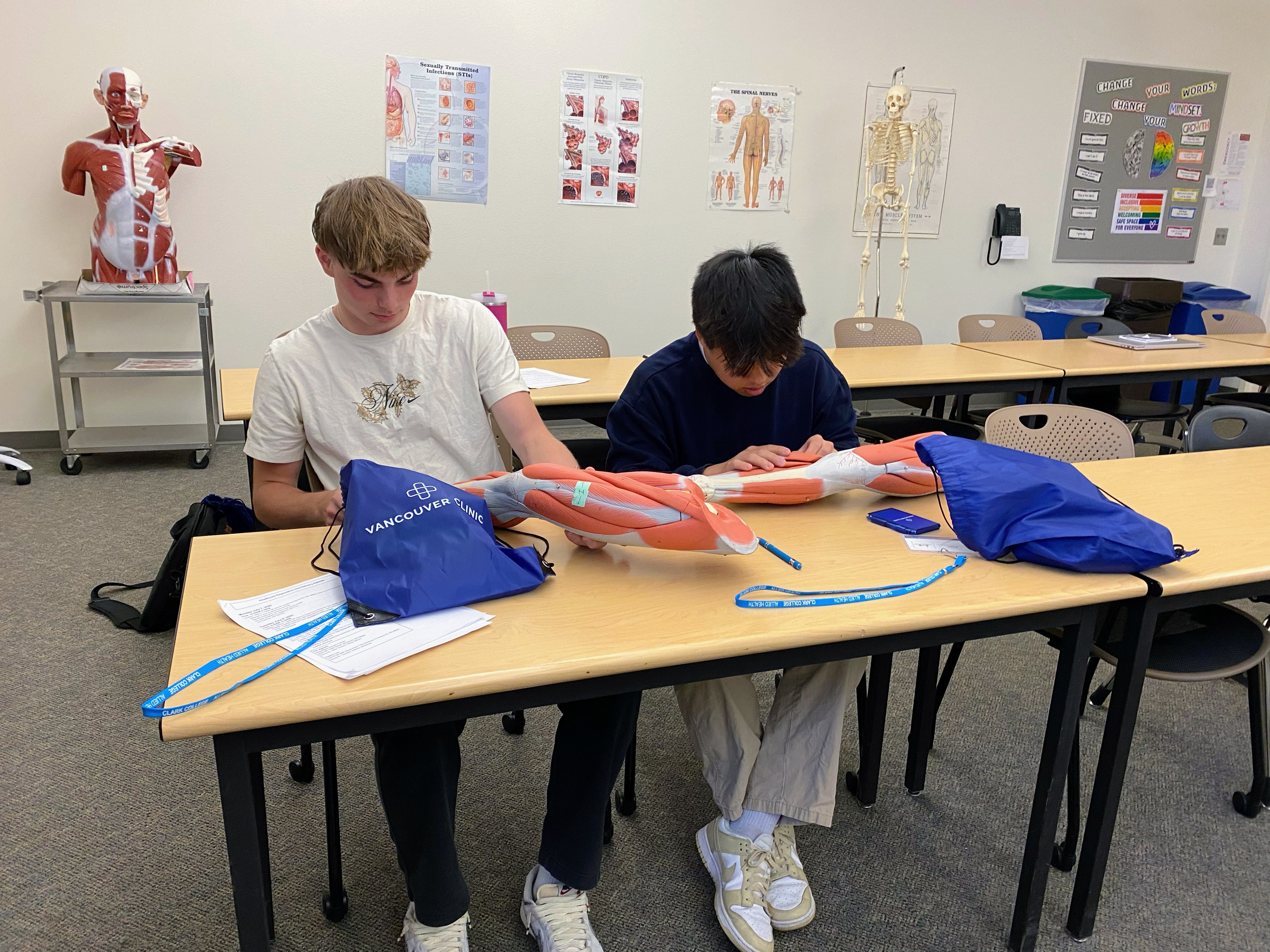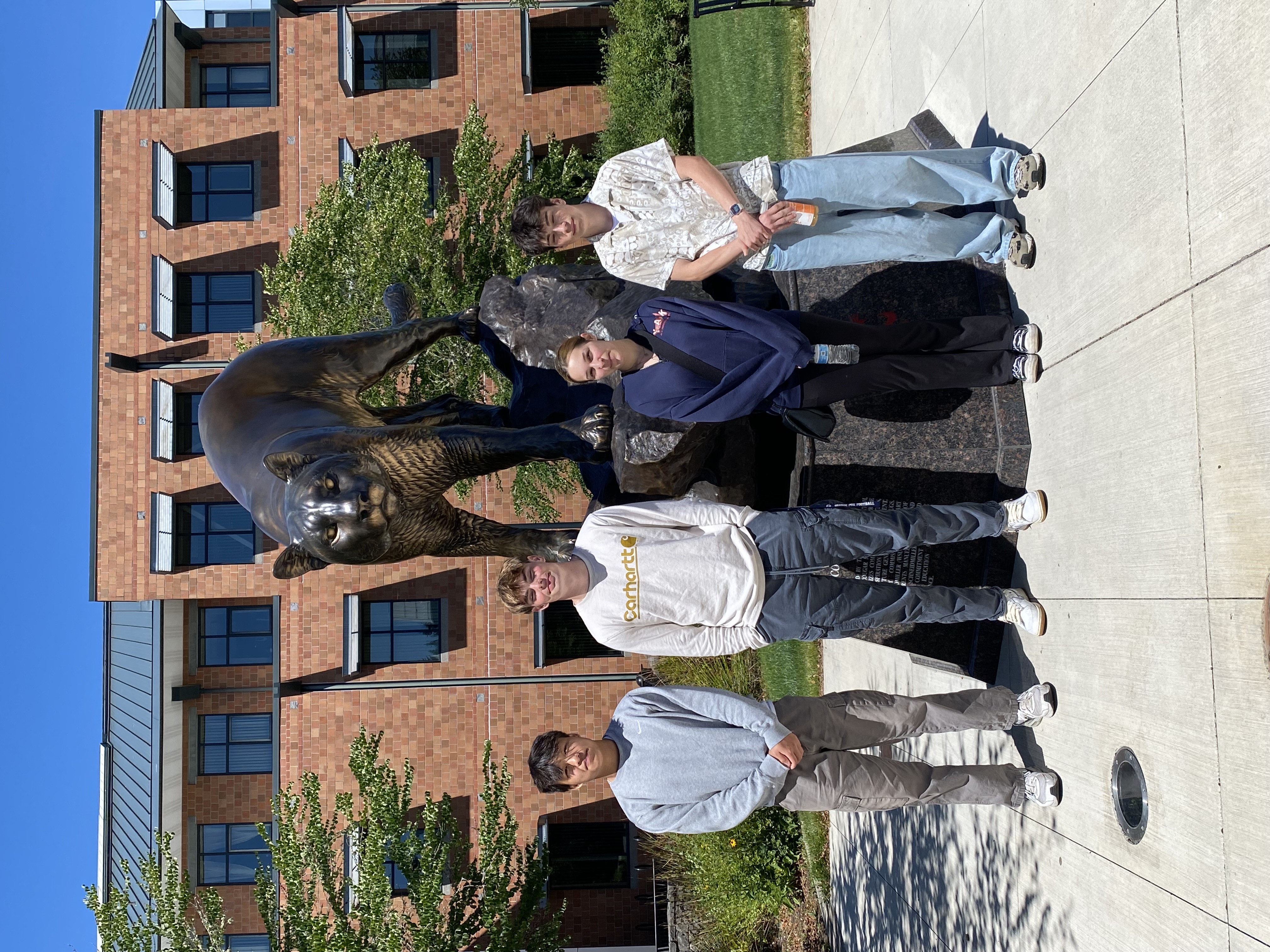Allied Health Inspires Next Generation of Students
New career exploration program immerses high school students hands-on experience in healthcare careers

“Somebody help!” a patient shouted as they stumbled into the room. Chaos erupted in
the mock emergency room. The doctors scrambled, nurses triaged, and the receptionist
tried to keep order. But this wasn’t a real ER.
It was the final day of Clark’s Allied Health 104 Healthcare Delivery & Exploration, a two-week summer program designed to give high school students the chance to explore the many career pathways in the fast-paced world of healthcare. On this day, their challenge was to test both their knowledge and their ability to perform under pressure in a simulation that mirrored a real emergency room.
In the culminating simulation, students stepped into roles: doctors, triage and floor nurses, receptionists, lab technicians, or patients. Instructors also joined the fray as patients, portraying an infant’s overzealous mother, a nonverbal young adult throwing up uncontrollably, and a quiet patient with unexplained heart issues. Together, the cast created high-stakes scenes that forced the students to juggle priorities, while ensuring each patient received the best care possible.
The room buzzed with the intensity of real-life medical drama—while inspiring students to imagine their own futures in healthcare.
“It’s going to be rough,” warned Allied Health instructor Miranda Devault before the activity began. “This is your first time jumping into this—the terminology, everything. But it’s not about knowing everything. It’s about struggling through because that’s how you learn.”
The experience lived up to her words. Shouts of, “Where’s the doctor?” and “I need a nurse in here!” echoed urgently through the room as students rushed from one patient to another. Autumn, who played the role of the doctor, admitted later,” I was so stressed out.” But despite the tension, instructors praised the group for staying calm and working together.

When the final patient had been wheeled away for “surgery,” the room broke out in cheers—relief mixed with a new appreciation for the intricate structure of a hospital.
During the debrief, instructors revealed what each patient had—hand, foot, and mouth disease, a heart attack, appendicitis—but the point wasn’t naming the illness. Students learned how to read vitals, determine when patients need lab work or surgery, and how to ask the right questions. The goal was to understand the flow of the hospital, what each role does, and how to communicate across those roles.
“I’ve learned so much in such a short amount of time,” said Mackenzie. “I’ll take all of the knowledge I learned here into my medical career.”
The emergency room exercise was just one activity in a program full of them. Thanks to a partnership with the Vancouver Clinic, and strong support from the Clark College Foundation—which graciously covered the tuition for each participant—seven students from Kalama and White Salmon gained invaluable, hands-on experiences. This was the first time the program has been offered in this capacity, but Allied Health leaders are already hoping to make it a regular training opportunity for high schoolers.

Over two weeks, students rotated through a variety of lessons and experiences. In one, they played an interactive quiz to learn the bones in the body by identifying them in their own frame. In another, they shadowed professionals across a variety of specialties. They even sat down with the CEO and CMO of The Vancouver Clinic for a Q&A session.
Even before they started, each student had expressed interest in the healthcare industry. By the end, that interest had only deepened.
For Alex, the highlight was seeing an ophthalmologist perform cataract surgery. “It gave me hope, seeing someone have their vision restored.”
Benji, an athlete who has endured a lot of injuries, said the program solidified his career path. After shadowing sports medicine physicians, he’s now “100% sure” he wants to enter the field. “I had about twenty questions answered.”

The program concluded with a final discussion, where each student reflected on what they learned and identified their top profession in the medical field. Together, they weighed the benefits, pay, education, and scholarships related to each role, helping them consider how their new experiences aligned with their long-term goals.
Students applied to be accepted into the program by writing an essay about what they hoped to gain from the experience. Many students heard about the opportunity through Christy Gutierrez, College and Career Readiness Advisor at Kalama High School, who has already seen the impact.
“The amount of growth in such a short amount of time that I’ve seen from these students has already expanded their horizons. These students are getting such a life experience right now, and any of the funding will be well worth it when we see them heading into healthcare careers because of this program.”
